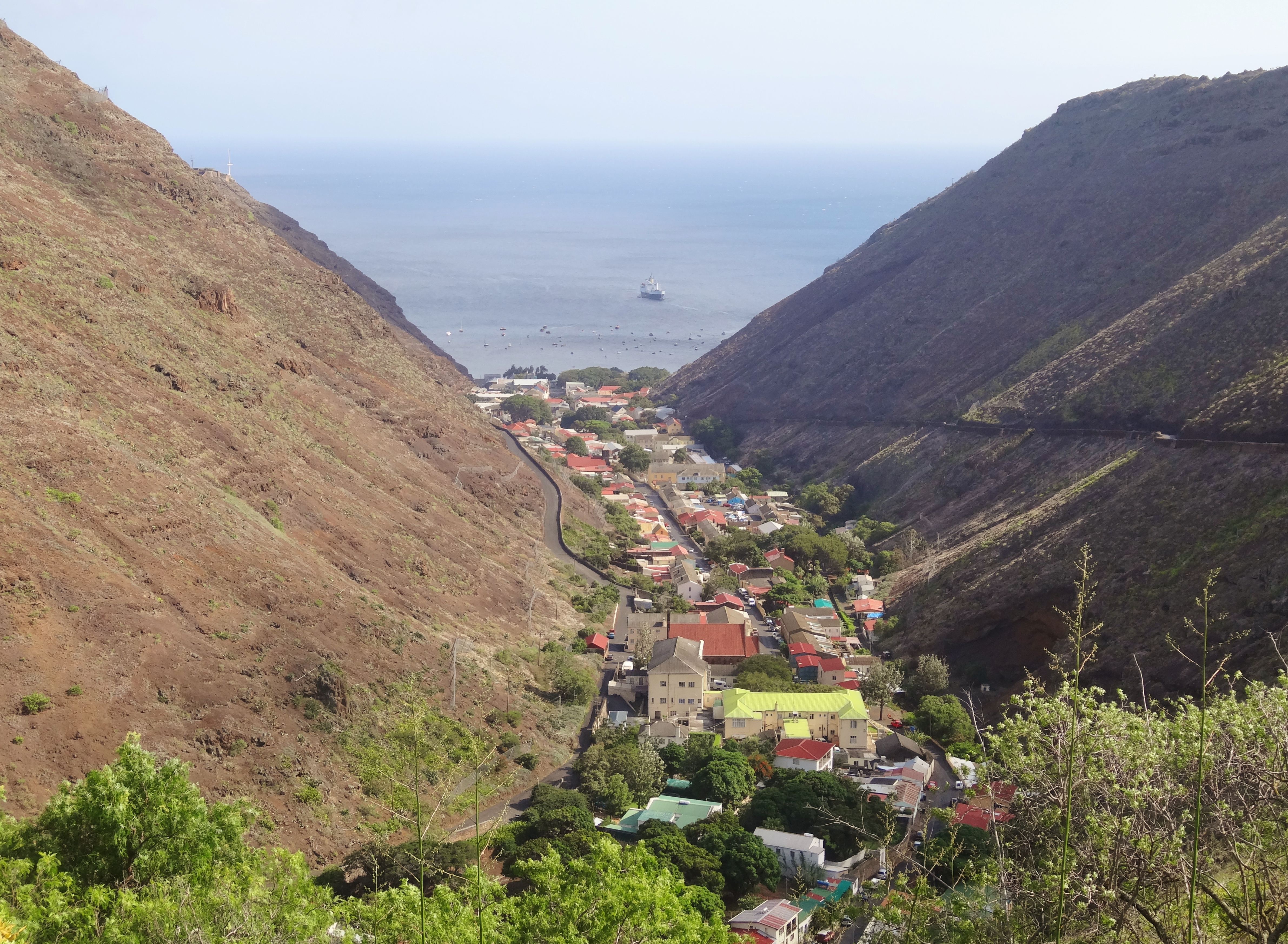A Slow Boat to Saint Helena
A Journey on the last Royal Mail Ship

Saint Helena is perhaps best known for being where Napoleon Bonaparte spent his final days in exile. It is one of six South Atlantic islands – separated from each other by 3600 km at their furthest points – that make up the British Overseas territory of Saint Helena, Ascension and Tristan da Cunha.
One of the remotest inhabited islands in the world, it is reachable only by boat. The sole scheduled service is on the UK’s last remaining Royal Mail Ship – the RMS St Helena – which sails from Cape Town, South Africa, every few weeks.
Work is apace, however, to build an airport on the island, connecting it with the outside world and opening up new possibilities for tourism. Once the airport opens in 2016, the iconic RMS St Helena will cease her sailings and many expect the influx of visitors to profoundly change the island.
I decided to go before the crowds arrive, booked my passage on the mail ship, and jumped on a plane to Cape Town for a once-in-a-lifetime trip.
Click on the photos to enlarge them and see the captions.
The tropical island of Saint Helena is essentially the top of a long-dormant volcano on the Mid-Atlantic Ridge, its slopes dropping away precipitously into the watery depths below. It is rich in biodiversity and home to some 400 species of plants and birds found only on the island and nowhere else, including the Saint Helena Plover or wirebird, the national emblem.
Sadly, human colonisation and the introduction of other plants and animals have led to the extinction of some species, with those that are left often threatened. Only patches remain of the original forests of ferns, she cabbage trees, St Helena dogwoods and many others, but efforts are being made to protect and cultivate indigenous species whilst removing some of the introduced varieties.
The remote island was first discovered by the Portuguese at the turn of the 16th century. Uninhabited but with plenty of trees and fresh water, it was an ideal stopping-off point for ships sailing back from Asia. The Portuguese introduced livestock, fruit trees and vegetables and began cutting back the indigenous vegetation.
Naming the island after Saint Helena of Constantinople, the Portuguese tried to keep the island a secret, but later in the century the English and Dutch found it too. Eventually, the Portuguese abandoned the island and in 1633 the Dutch claimed it as theirs. Within less than twenty years, though, the Dutch, too, had left the island as their new colony on the Cape of Good Hope in what is today South Africa was proving a better supply station.
Enter the British. In 1657, Oliver Cromwell gave the English East India Company a charter to govern Saint Helena and two years later the island’s first governor arrived.
The island was fortified and colonised, but problems accumulated: rebellions and unrest, deforestation and soil erosion, and disease and vermin meant Saint Helena was anything but a tropical paradise. The population was a mixture of soldiers, colonists and slaves from Africa, India and Madagascar. After the importation of slaves was banned in 1792, Chinese labour was brought in instead. Today, ‘Saints’ – as the island’s inhabitants are known – are descendants of this rich mixture of peoples.
In 1815, following the Allied victory at Waterloo, the British chose Saint Helena as a suitably remote spot to exile Napoleon.
Concerned that the French might mount a rescue mission, the British garrisoned extra troops on the island, kept naval ships circling and even seized Ascension Island 1300km to the north, lest their Gallic foes use it as a base to launch an attack. The defeated Emperor spent his final days at Longwood House, specially built for him, until his death in 1821.
In 1833 Saint Helena became a British Crown Colony. The opening of the Suez Canal in 1869 saw a decline in the island’s importance as a supply stop for water and provisions, with a sharp drop in the number of ships calling into port.
In the early 20th century flax was introduced and planted across large areas of the island for producing rope, string and mail sacks. But high shipping costs and the introduction of synthetic fibres saw Saint Helena’s flax industry wither, the last mill closing in 1965.
Today, the island’s economy depends on financial support from the UK and the European Union. The islanders do some fishing and there is a small amount of agriculture; otherwise, all the food and supplies for Saint Helena’s 4000 inhabitants are imported from South Africa on the mail ship.
At the moment, the sleepy rock receives just over 3000 tourists a year, many attracted by the Napoleon factor; once the airport opens, this figure is expected to increase tenfold, bringing much needed income.
I am very glad to have had the opportunity to visit Saint Helena before the airport opens. Air travel is a wonderful thing, but making the journey on the slow boat from Cape Town had was a special experience. It was also good preparation for the relaxed pace of life on the island.
It is hard to imagine the effect of ‘large scale’ tourism on Saint Helena and its friendly but laid-back populace, but the airport will certainly mark a new stage in this tiny territory’s history.
RETURN
